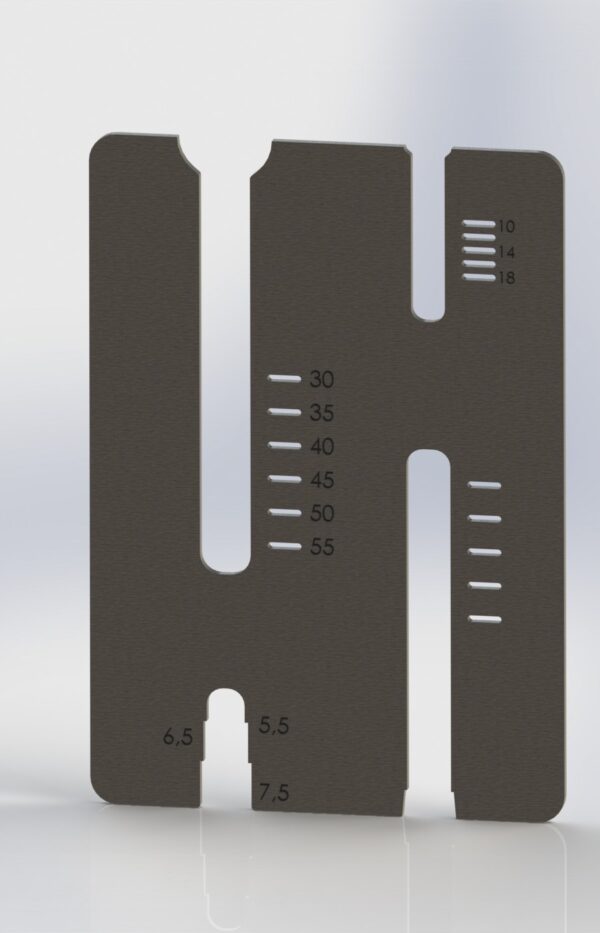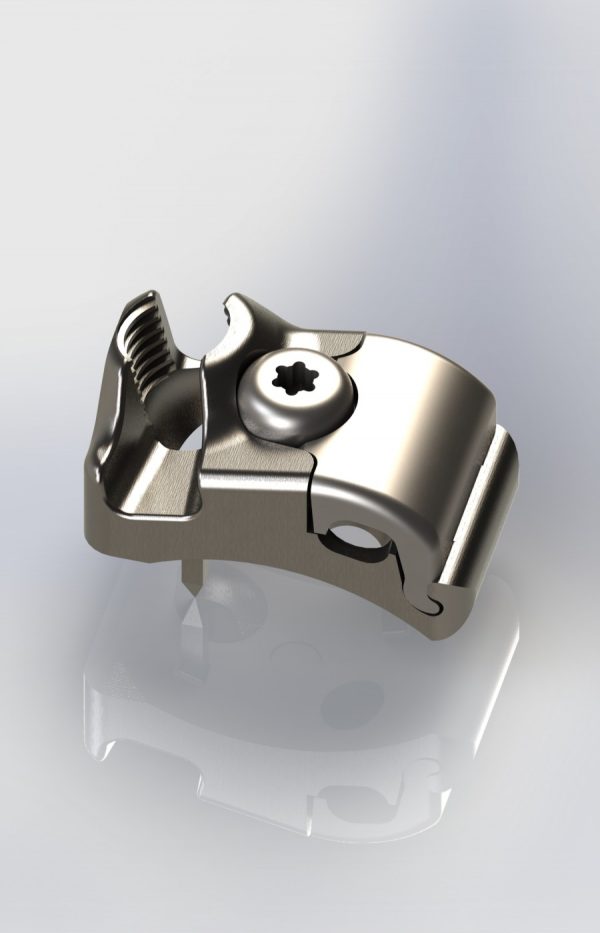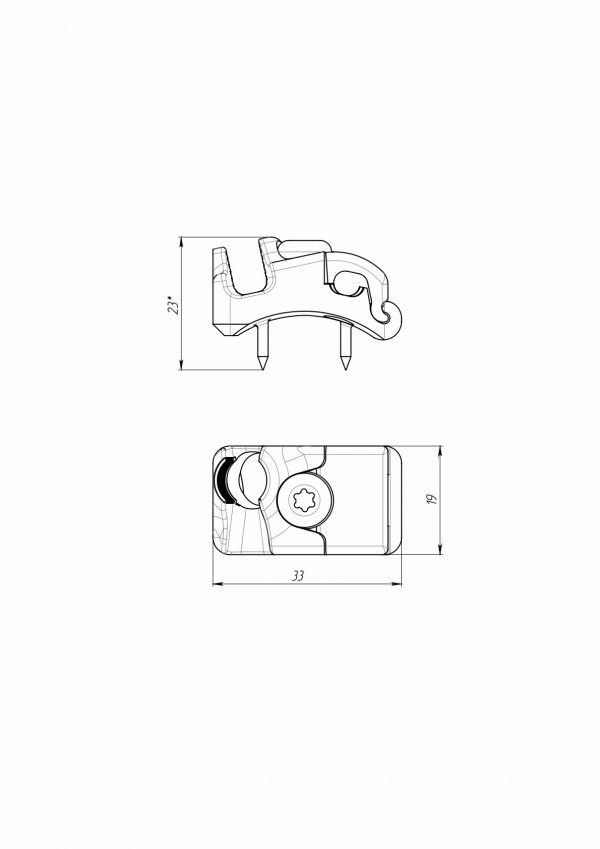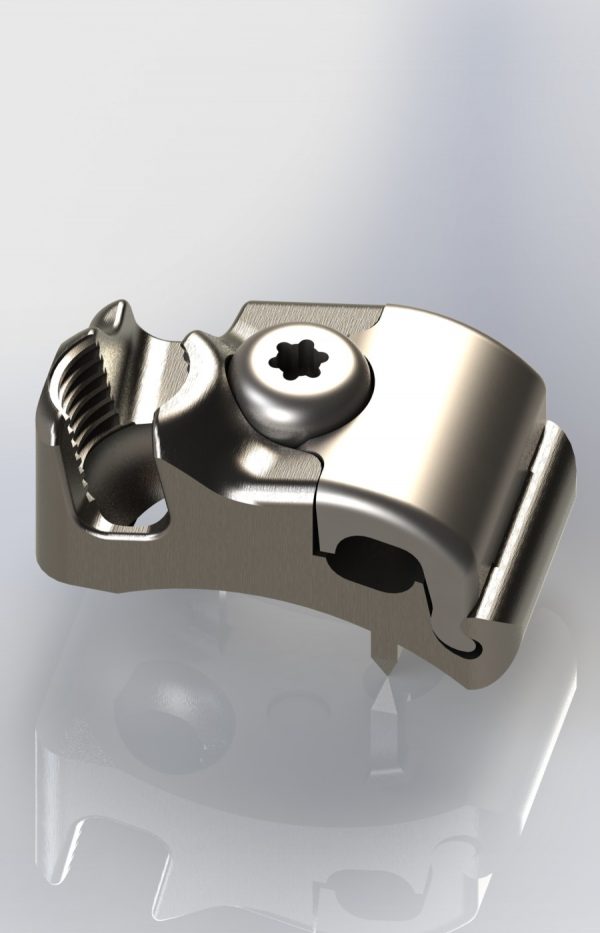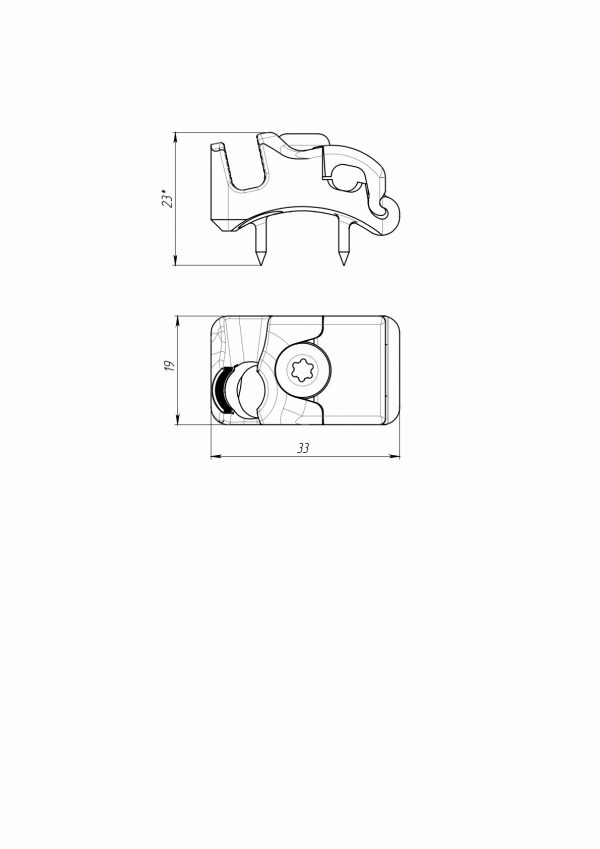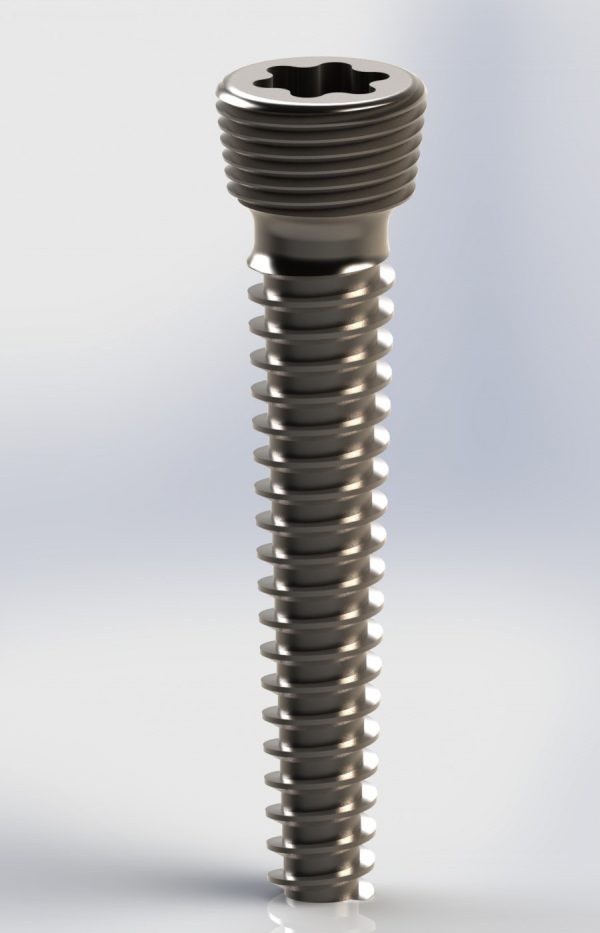Polysegmental system of ventral fixation of the thoracic and lumbar spine is designed to fix the anterior thoracic and lumbar spine. It consists of different in shape and size screws with angular stability, connecting rods, plates for fixing the vertebral segments.
Design features of plates provide their installation both on a vertebra by an arrangement of cranial and caudal depending on a zone of surgical intervention. All elements of the implant can be used in various combinations and combined with each other. The implants are made of titanium alloy with high corrosion resistance, inertness in biological tissues, modulus of elasticity, which is close to the parameters of bone tissue, and is resistant to alternating loads. All this determines tolerance and biocompatibility with tissue structures during implantation in
organism. To install the structure, a universal mounting tool has been developed, which allows installation and, if necessary, removal of the implant.
- Indications for the use of a polysegmental system of ventral fixation of the thoracic and lumbar spine are:
- scoliotic and kyphotic deformities of various etiologies;
- traumatic injuries;
- degenerative-dystrophic diseases;
- cancer.
An obstacle to the use of a polysegmental system of ventral fixation may be the presence of abnormalities of the vertebral bodies such as butterfly-like vertebrae, wedge-shaped vertebrae, semi-vertebrae, hypoplasia of the vertebrae, pronounced degenerative-dystrophic changes in the vertebral bodies
Installation of the ventral system of fixation of the thoracic and lumbar spine is performed using a set of orthopedic and neurosurgical instruments, a mounting instrument, a mobile X-ray unit, VAC device (aspirator), etc.
Surgical intervention is performed by performing surgical access to the ventral parts of the vertebral bodies in the position of the patient on the side corresponding to the concave side of the deformation and dissection is performed on the convex side of the deformation. Segmental vessels are isolated, ligated, and cut, and large vessels are carefully isolated. At the top of the spinal deformity, the rib heads are removed together with the deformed sections of the ribs. On the convex side of the deformation, overlays are installed on the lateral surfaces of the vertebral bodies to be fixed, through the holes of which screws are inserted into the vertebral bodies. After that, from the upper intervertebral space to be fixed, perform a total resection of the intervertebral discs and their locking plates. Deformation correction is performed by connecting the screws to each other with fixing rods and converging the resected surfaces of the vertebral bodies and performing stabilization of the spine by fixing the screws to the rods. After that, active drainage of the VAC device is introduced into the wound and the wound is sutured in layers. To control the correctness of the implant and determine the degree of correction of curvature perform control radiography using a mobile X-ray machine. Dynamic neuromonitoring is performed during and immediately after surgery to assess spinal cord function.
Criteria for the effectiveness of the polysegmental system for ventral fixation of the thoracic and lumbar spine are the maximum possible restoration of the normal contour of the spine in the frontal and sagittal planes, restoration of protective function of the spinal cord, correction of spinal curvature by at least 60%, bone block in 3-6 months after surgery.
After surgery, measures are taken for postoperative wound management and healing, followed by mobilization of the patient similarly to the previously described procedures.
 +38(095)290 08 98
+38(095)290 08 98  vostv.medgrup23@gmail.com
vostv.medgrup23@gmail.com
